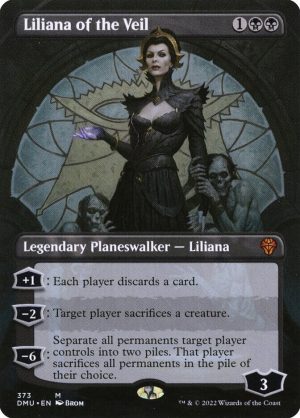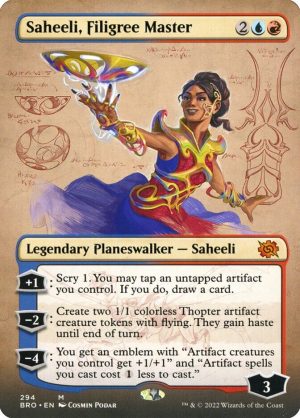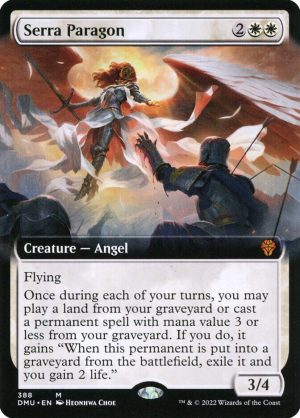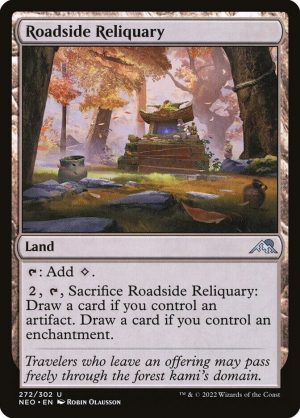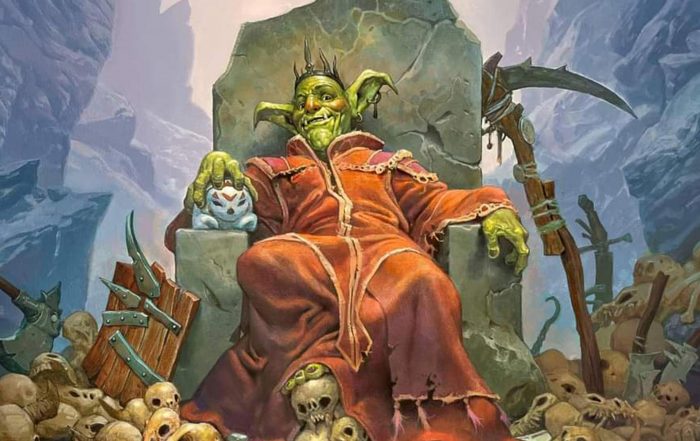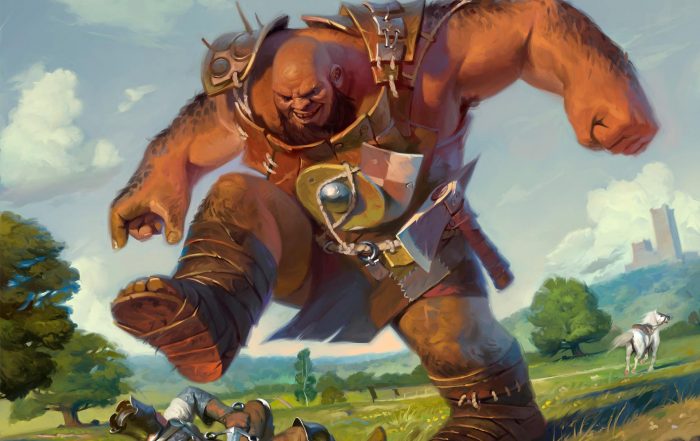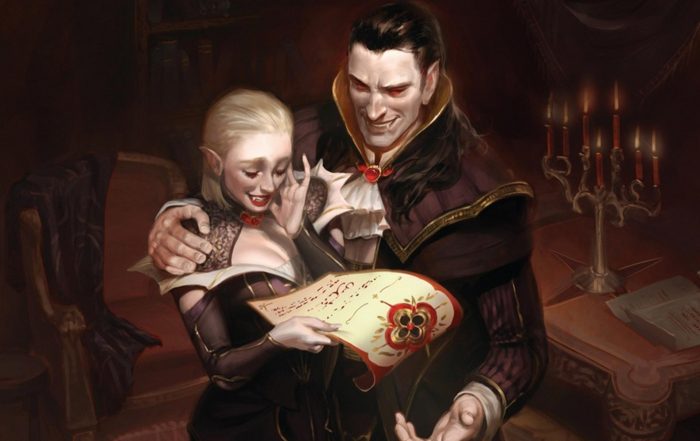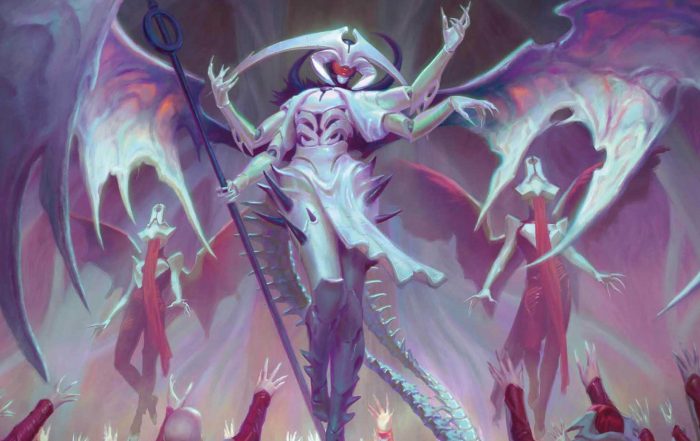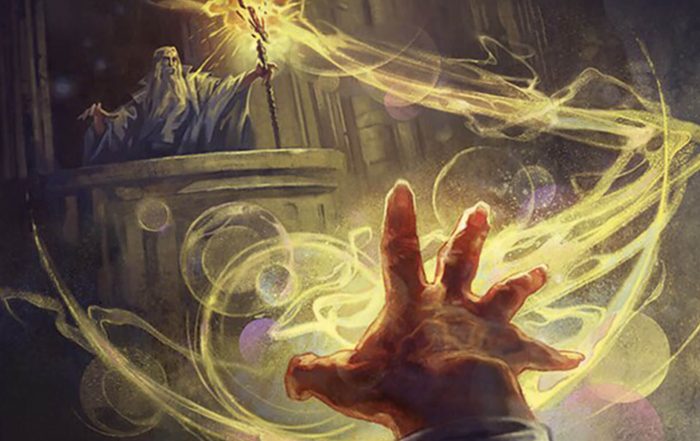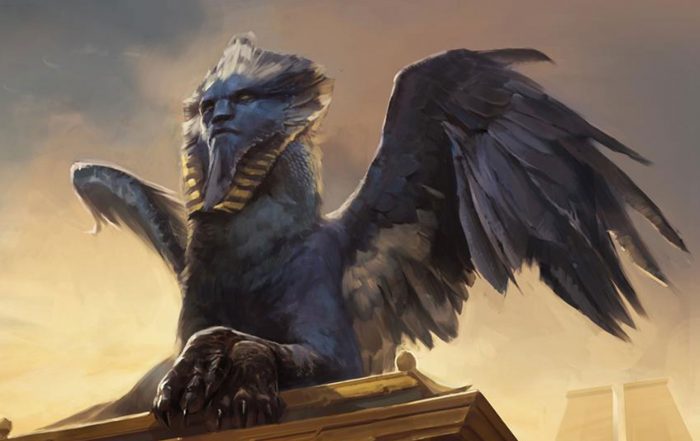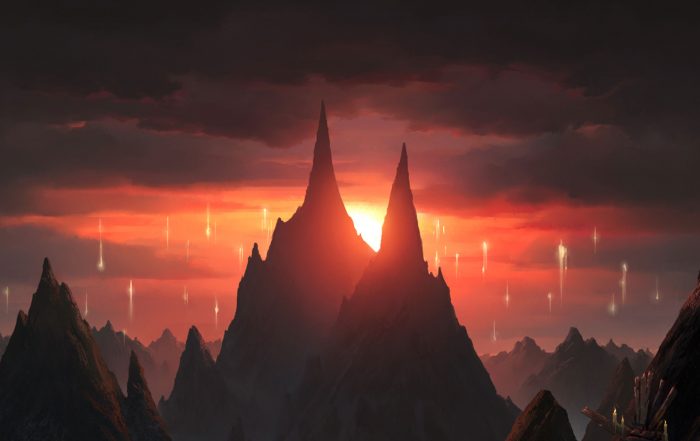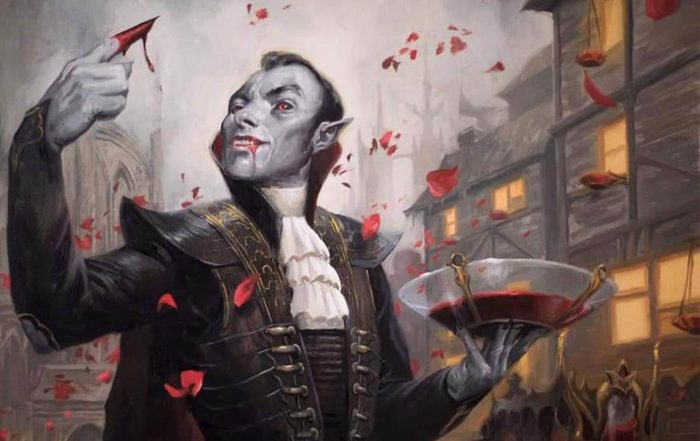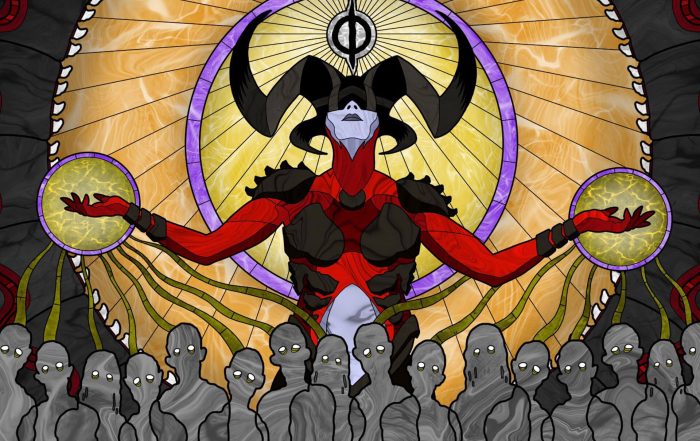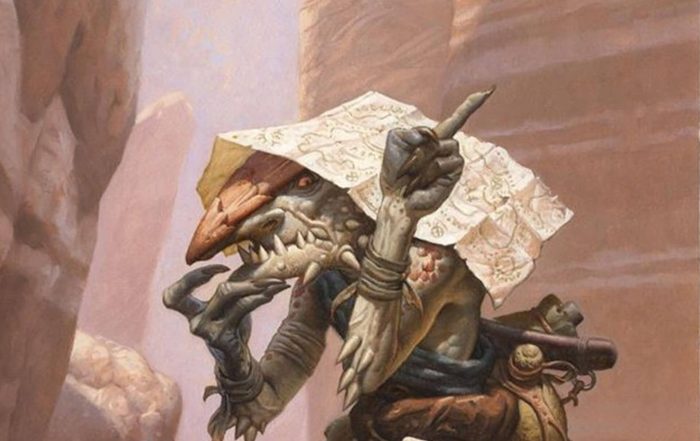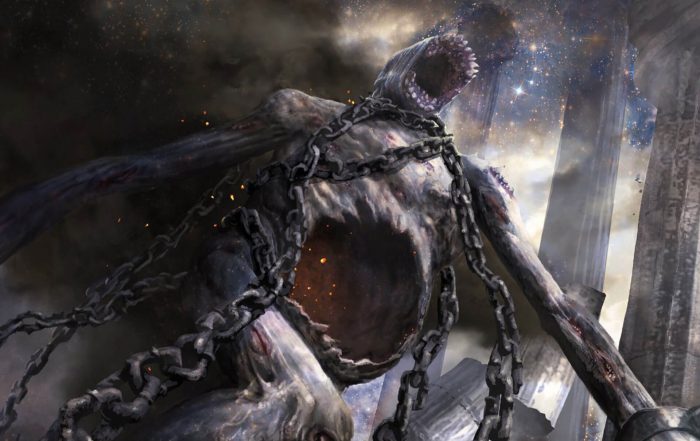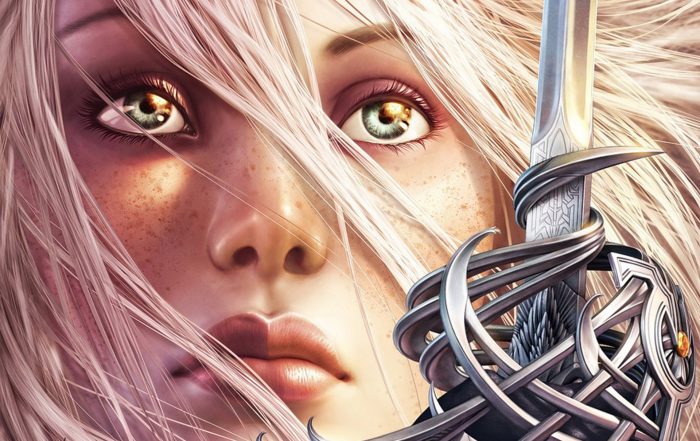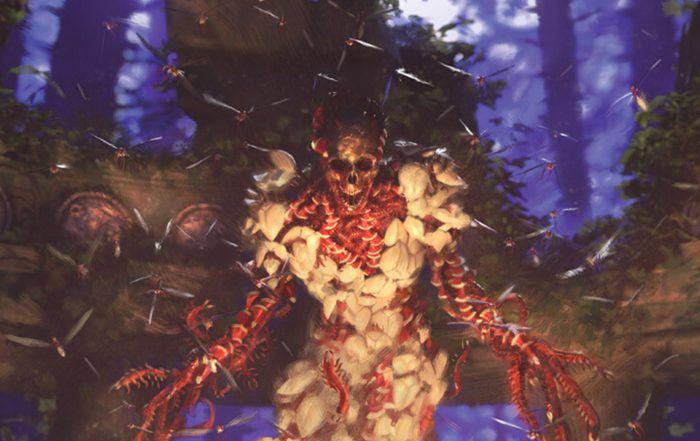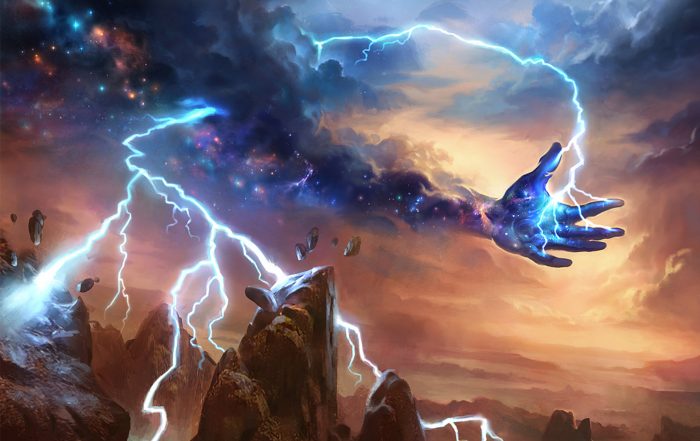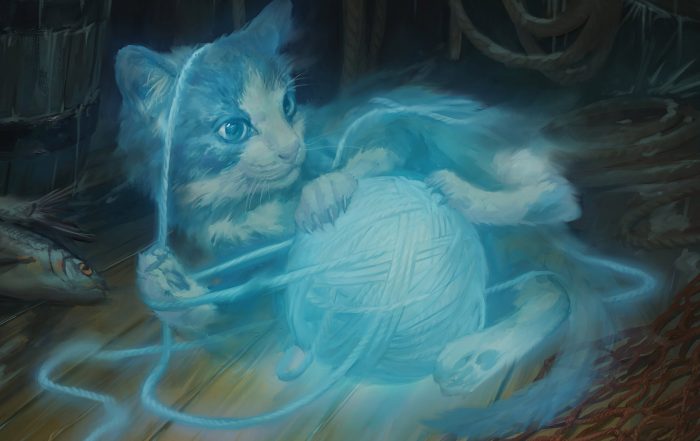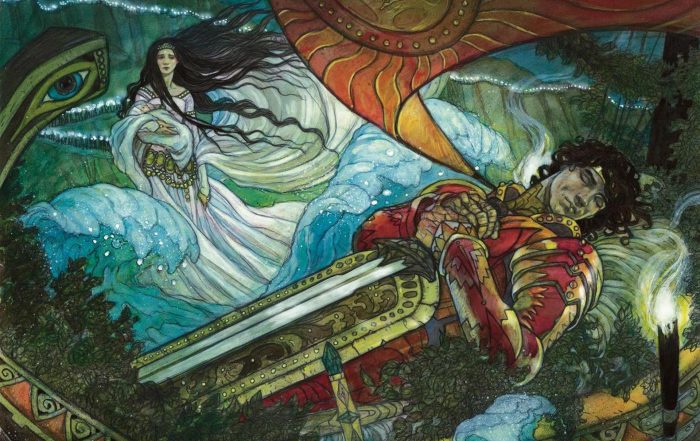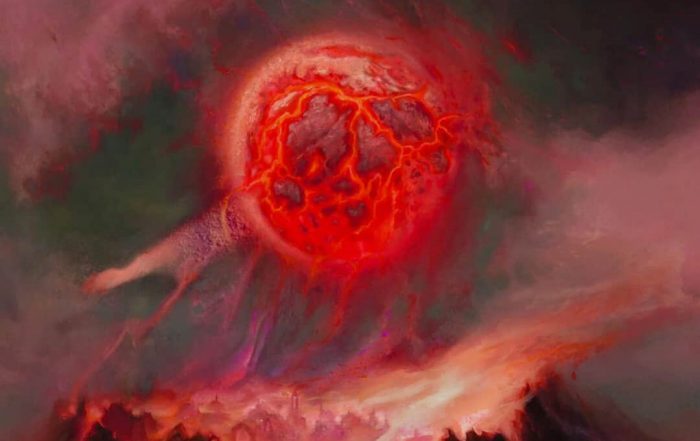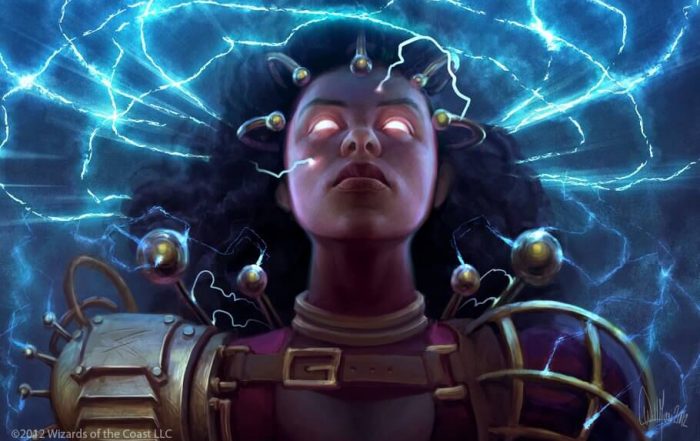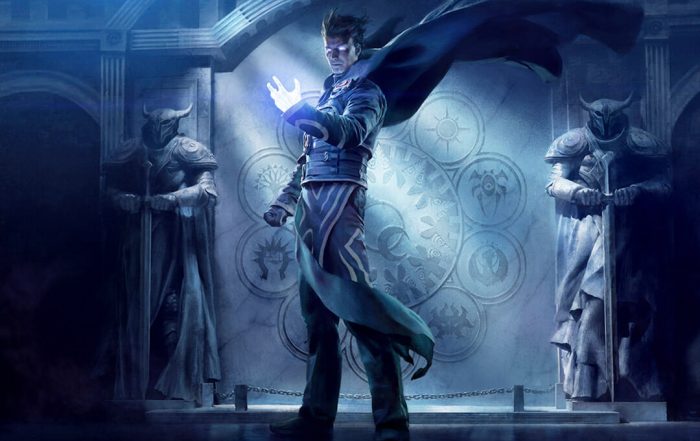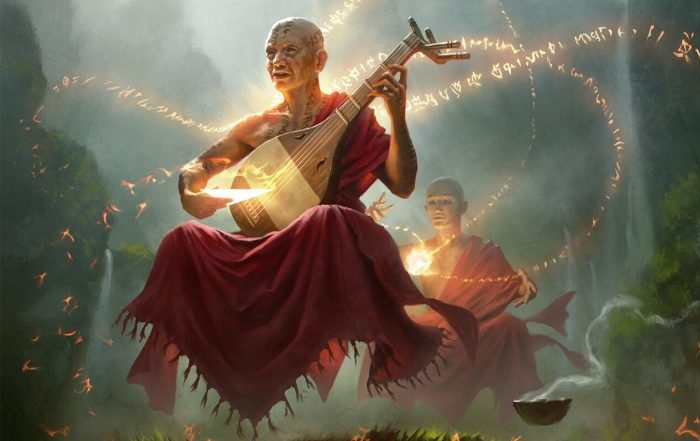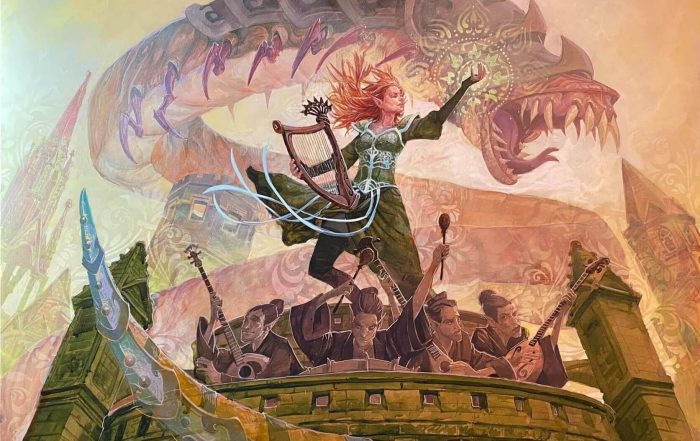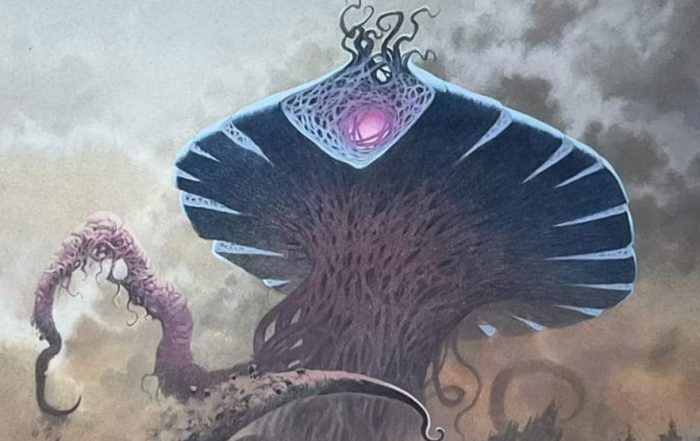Grixis Midrange Primer
Grixis Midrange in Standard
The Deck That Won The Regional Championship
Author: Zen Takahash
Hello everyone!
Earlier this month, I managed to win the Australasian Regional Championships with Grixis Midrange! You can read all about my experience here, including why I chose to play the deck.
In today’s article, I will instead be covering in-depth about the deck I played – the decklist I submitted, the cards we chose to play and omit, and how to approach and sideboard against the top decks in the format!
The Deck

For this Regional Championships, alongside my usual testing team based in our region, we also collaborated and worked with some overseas players. In the end, we had a solid group of about twenty people – including some high-profile players such as Nick Price (Philippines), Dom Harvey (Canada), Raul Venturi (Italy) and Jae Seok Cho (South Korea).
Most of our online collaboration team were interested in playing Grixis, which meant we had a lot of players working on the deck. On Wednesday, a few days before the Regional Championships, we had a team video call where we spent three hours discussing the decklist, the sideboard, and how to approach each matchup. It was during this call that we finalized all of our thoughts and put together the below decklist. I will now cover some of the key card choices we opted for, as well as why we omitted some cards.
The Key Cards
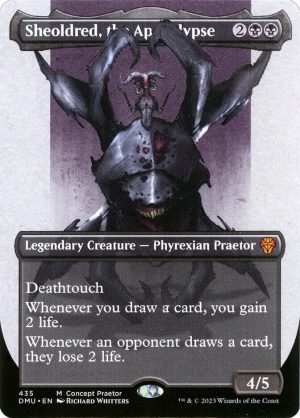
Most people played Sheoldred, the Apocalypse in their Grixis deck, but before our tournament, nobody played as many copies as we did. Looking over the Grixis decklists from before our Regional Championships, most people played either zero or one copy of the legendary creature in their main deck, with one or two in the sideboard, to have two copies in the 75. However, we instead played two in the main deck, with a third in the sideboard, and I was also pretty close to just playing three in the main deck.
I believe that this was one of the best decisions we made.
The previous consensus seemed to be that Sheoldred was bad in the mirror, but from our testing, we simply just did not find that to be the case. Rather, it was great on the play, but not on the draw. It was great on the play because, as we will get to later, the mirror match on the play is all about executing a tempo plan and getting on board quickly.
Sheoldred is a big threat that must be dealt with straight away, and doing so hastily forces your opponent to not commit onto the board themselves.
On the flip side, it was worse on the draw, as your turn four Sheoldred walked right into their turn five Invoke Despair. In the mirror, when you are on the draw, it is generally about controlling the board and trying to not let your opponent overwhelm you, and tapping out for a big creature on turn four is a very risky proposition.
For our Regional Championships, we sideboard in the third Sheoldred on the play, and sideboarded out all copies on the draw.
However, now that Razorlash Transmogrant is played by everyone, I think you need to keep some copies of Sheoldred on the draw too as it is the best way to handle the 3/1 creature.
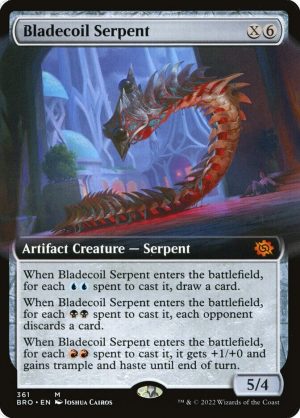
Of all the key changes we made to the deck, the addition of the Serpents were my favorite. I had tested a lot against Mono White Control, and I wanted a card that would improve the matchup dramatically. I gave the Planeswalkers a chance, such as Kaito Shizuki and Saheeli, Filigree Master, but was very underwhelmed.
This was when I saw that my friend and former Israeli national champion, Niv Shmuley, had made the top 8 of a Standard Challenge with three copies in his deck. After talking to him about it and hearing him wax lyrically about the card against the mirror and Mono White, I was sold. Although three was clearly too many, I was happy to play two in the 75.
The big advantage that Bladecoil Serpent has is that it lets you play the game differently by having it in hand. Against both the mirror and Mono White, you generally want to be proactive, but you can’t always do that, especially if you end up with a more reactive hand.
This is where the Serpent shines, as it lets you play a reactive game where you disrupt their key cards, and then catch up later with the Serpent, by discarding their remaining hand and/or draw multiple cards. This plan is especially effective because the Serpent dodges both Duress and Negate, which makes it more reliable than Invoke Despair.
The other key to the Serpent is that it is really good at killing Planeswalkers. It is crucial against Mono White Control to deal with The Eternal Wanderer, and a Serpent with haste can deal with it the turn after the Planeswalker has come into play. Irrespective of whether they used the plus ability or made a Samurai token.

Previously, most Grixis players were either playing zero or one copy of Brotherhood’s End in their main deck. However, we opted to play two, and also adjusted our manabase to support it.
The reason we were so high on the card was that we found it to be really important against Mono White Control and the mirror when you were on the draw. In both matchups, the starting player tends to have a sizable advantage as they can get onboard quicker, and the sweeper was an effective way to catch up – either dealing with multiple creatures or Reckoner Bankbusters. It was also good post-board in the mirror if they were on the Planeswalkers plan, although by the time this comes out, I’m sure everyone would now be playing Razorlash Transmogrants instead.
This was the biggest innovation to our decklist, and while it would be commonly played by the time this article is released, at least for our Regional Championships, we were one of very few people in the room playing it.
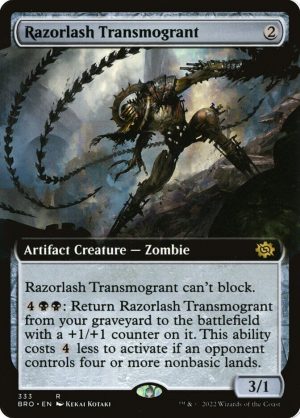
The card is simply phenomenal against the mirror and the Atraxa, Grand Unifier decks. It does everything you want in these matchups – it pressures your opponent, plays well with counterspells, mitigates the impact of Invoke Despair, can be discarded to Fable of the Mirror-Breaker or a blood token, and can crew Reckoner Bankbuster.
We had known about the card for quite a while, as while it wasn’t commonly played online, I saw it being played in the Hareruya tournaments in Japan. However, up to now, it felt like Grixis wasn’t a significant enough deck to warrant playing it over more flexible anti-midrange cards that also covered your bases against Mono White and Rakdos. That said, with the release of Phyrexia: All Will be One, we expected Grixis’ popularity to increase, and also the multicolored Atraxa decks started popping up.
We were heavily rewarded with our choice to play two copies of the creature in our sideboard, as Grixis was nearly a third of our Regional Championships, and I personally went 6-1 against the mirror.
Going into the Regional Championships, I firmly believed that Esper Legends was one of the top decks, if not the best deck. The archetype’s lack of popularity and results were mostly due to the cost of putting the deck together on both Magic Online and on Arena (it uses a lot of wild cards)! However, for this event, I wanted to respect it.

While people commonly played Parasitic Grasp in their sideboard, I much preferred Whack.
Basically, the decision of playing the Parasitic Grasp or Whack was about whether you respected Mono Red or Esper Legends more, and I firmly respected Esper more. Also, what tipped the balance for me, was that I believed Whack was better against Azorius Soldiers – the difference between costing one and two mana is so crucial, especially when you need to deal with creatures like Skyelv, Defector Mite and Thalia, Guardian of Thraben.
Funnily enough, Esper ended up not being popular at our Regional Championships at all. Though it did over perform, and it was the deck I had to beat in the finals, and so I was grateful that I skewed my list to focus on the matchup. A week after our event though, the deck was everywhere at the European Regional Championships, so I think I was correct – just slightly too early.
We initially played a pair of Blue Sun’s Twilight in our deck over Bladecoil Serpent, but we ultimately cut them (I will get to why below). One of the big consequences of this decision was that our deck was now quite weak to Ao, the Dawn Sky. To address this, we added a Soul Transfer to the sideboard – a somewhat clunky, but flexible, card that we could board in to hedge against various threats (Ao, the Dawn Sky, The Eternal Wanderer, Razorlash Transmogrant, etc).
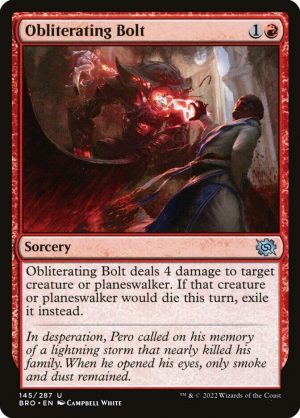
Still, I felt uncomfortable about only having one exile-effect in the deck, but I didn’t want to add a second Soul Transfer in the 75.
It was actually when we were in line for customs on our way to Melbourne for the tournament, that Calum, my teammate and travel companion, suggested that we play an Obliterating Bolt in our sideboard.
This was exactly what I was looking for – not only does it deal with Ao, but costing two mana meant that it could also deal with Raffine, Scheming Seer and Squee, the Dubious Monarch reliably – two other creatures that we were worried about.
This decision ultimately won me the tournament, as in game two of the finals, I had the Obliterating Bolt to deal with my opponent’s Ao, the Dawn Sky.
Had I not had it, I think I would have had an uphill battle to win that game. I know that some people are now playing Anoint with Affliction in this slot, which makes sense as it is an instant, but I think if Ao, the Dawn Sky is popular in the metagame, then I would prefer the red sorcery spell instead.
Cards that didn’t make it into the 75
When we first started trying Blue Sun’s Twilight, we were immediately impressed with it in the mirror and against Mono White Control.
We basically wanted two cards in our 75 that could “go big” in these midrange mirrors.
We found that it was great for stealing a Goblin token from your opponent’s Fable of the Mirror-Breaker on turn three or four, while you could also reliably cast it for X=5 to steal plus copy a Corpse Appraiser or Ao, the Dawn Sky.
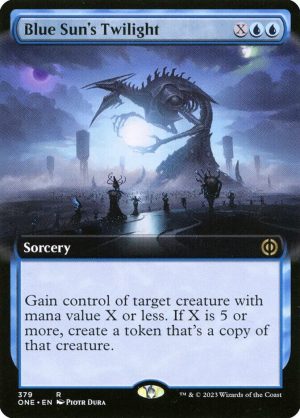
However, when we started playing it more, we noticed some issues with the card. It lined up quite poorly against Thalia, Guardian of Thraben, and in the mirror match, it was great in game one, but less so post-board when they had Duress and Negate.
Also, while it was good against Mono White Control, as they moved away from Ao, the Dawn Sky and started to play The Eternal Wanderer, the card became a lot worse as Ao was the best target and The Eternal Wanderer blanks the card as they can blink back their creature and/or blink away the token. Furthermore, stealing their Goblin token on turn three or four was unreliable with only twelve blue sources in the deck.
Ultimately, for these reasons, we decided to instead play Bladecoil Serpent as our “go big” card for the midrange mirrors.
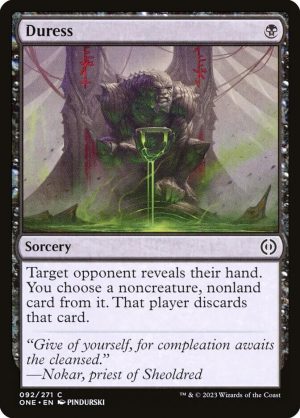
We originally had Duress in our sideboard, and I liked it a lot in the mirror match and against Mono Blue Djinn. However, once we put Razorlash Transmogrant into our sideboard, it became clear that we had too many cards to sideboard in. When we realized that, it seemed pretty straight forward to cut Duress, as I didn’t really like it against Mono White Control and I did not expect Mono Blue to be a popular deck.
Going forward, I think Duress will still be good in the mirror, but less so as the mirror match becomes more about Razorlash Transmogrant in the post-board games.
Before we popularized Razorlash Transmogrant at our Regional Championships, most Grixis decklists had two or three Planeswalkers in their sideboard as a way to combat the midrange mirrors. These were a combination of Kaito Shizuki, Liliana of the Veil and Saheeli, Filigree Master.
We tried all of them extensively, and found all of them to be bad. I’m kind of glad we realized this quite quickly, as it made us more comfortable about playing Razorlash Transmogrant even though it was narrow, as it felt like our other options were lackluster anyway.
The main issue we found with these Planeswalkers in the mirror was that they were easy to deal with (Brotherhood’s End and Invoke Despair), but they were also just too slow on the draw.
Against Mono White Control, we found that they go wide with cards like Wedding Announcement, which often gave them ways to just pressure these Planeswalkers, and we didn’t want to waste removal spells just to deal with random 1/1 tokens.
Of the three, I do think Kaito Shizuki is the best.
Liliana of the Veil isn’t good against Mono White Control – in fact, it’s actively a liability, while Saheeli, Filigree Master awkwardly walks into your opponent’s turn four of Reckoner Bankbuster plus Counterspell, which is devastating.
Matchups and Sideboarding
Grixis Midrange (Mirror Match)
The sideboarding plan here is assuming they have both Razorlash Transmogrant and Sheoldred, the Apocalypse in their deck. Sideboarding changes a lot depending on their exact list. For example, if they don’t have any Razorlash Transmogrant, then you don’t need Soul Transfer, or if they have multiple Planeswalkers in the sideboard, you probably want Brotherhood’s End on the play as well.
I think our list was well tuned for the mirror, as I went 6-1 against it at the Regional Championships, with my only loss being to a teammate playing the same decklist and with the same gameplan. Essentially, our plan was to be tempo-orientated on the play, while being controlling on the draw.
With the printing of the fastlands, Grixis can now reliably play on curve in the first few turns of the game. This means the starting player has a big advantage, as they can consistently go turn two Bloodtithe Harvester or Reckoner Bankbuster into turn three Fable of the Mirror-Breaker. When you can start the game in such a powerful way, you want to leverage that, by playing aggressively and not giving your opponent the chance to compete in the game.
If you are on the draw though, you need to somehow stop this. To do so, your plan looks quite different. Because your opponent is trying so hard to get on board quickly, your plan is to make sure you can keep up with it, with the hope that if you can reach turn five or six with about an even board state, then things are looking good for you as you’re up a card on them by being on the draw.
Therefore, on the draw, you seldom want to cast any threat on turn two, but rather, you want to Abrade their turn two Reckoner Bankbuster or hold up a counterspell for their turn three Fable of the Mirror-Breaker. I like casting Reckoner Bankbuster on the play on turn two if I have a Fable of the Mirror-Breaker in hand, because it forces your opponent to either deal with it or hold up a counterspell for Fable, whereas on the draw, you cannot play a turn two Bankbuster, as you need to be handling their board.
This is also why we board out all our Bloodtithe Harvesters on the draw – you seldom want to tap out on turn two for it as stopping their Reckoner Bankbuster/Fable of the Mirror-Breaker is much more important.
The easiest way to lose on the draw is to not deal with one of their early threats, and they snowball the advantage from it.
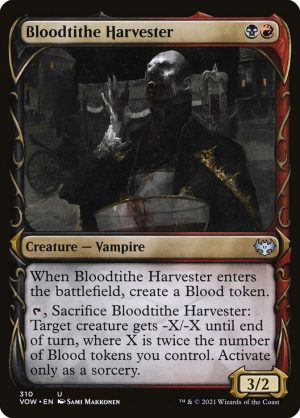
This is why we liked Sheoldred, the Apocalypse on the play, but not on the draw, and the other way around for Brotherhood’s End.
Sheoldred is good on the play because it keeps your aggressive plan going forward and is just another card your opponent has to deal with quickly (Harvester/Bankbuster -> Fable -> Sheolred is the dream sequence), while on the draw, you can seldom afford to tap out for a Sheoldred on turn four, as it leaves you exposed to them resolving a turn five Invoke Despair – which would be absolutely backbreaking.
On the flipside, Brotherhood’s End is poor on the play as you’re more focused on getting on board than sweeping it, but on the draw, it’s a great way to catch up by dealing with multiple creatures at once.
I often find that Brotherhood’s End is at its best on turn five, where you can cast it to deal with two or three creatures (potentially a Reflection of Kiki-Jiki from their turn three Fable), while also holding a counterspell up.
Bladecoil Serpent is also a card we really liked because it fit our plan on the draw really well – we could kill/counter their first five turns of play, then hope to resolve a Bladecoil Serpent on turn six or eight to empty out their hand and/or draw some cards.
One of the key learnings from our preparation was also understanding how Corpse Appraiser works in the mirror. There are actually not that many creatures in either decks, so being the player to start chaining Corpse Appraiser triggers is important. This also means you need to be careful about when you cast your creatures, as it can be devastating if they can kill it and then exile it with their own Corpse Appraiser straight after.
I find that you often need to treat your spare creatures a bit like Kroxa, Titan of Death’s Hunger in Pioneer, where you want to discard it and exile it on the same turn, so it’s not exposed to your opponent’s Graveyard Trespasser (or in this case, their Corpse Appraiser).

Interestingly enough, when I am on the play, if I don’t have a Fable on turn three, I am often happy to cast a turn three Corpse Appraiser without exiling anything just to get on board. I wouldn’t do this if they have untapped mana though, as it’s too risky to let them counter or kill it, then untap, and cast their own Corpse Appraiser and exile yours. But it is a good play if they cast an Abrade on your turn two Bankbuster or had a tapped land on turn two.
Mono White Control


Compared to the Grixis matchup, the sideboarding against Mono White is a lot more straightforward. The main difference is you want the Obliterating Bolt if they play Ao, the Dawn Sky, and you want two Brotherhood’s End on the draw as a way to clean up Wedding Announcement and The Wandering Emperor.
This matchup plays out quite differently to the mirror for two key reasons:
- Firstly, you want to be tempo-orientated on both the play and the draw, as the game going long disadvantages you since their average topdeck is more powerful than yours.
- Secondly, they do not have any counterspells, so you can reliably play your cards on curve without worrying.
Comes Out
-1 Cut Down
-1 Abrade
-1 Go for the Throat (two if they have Ao, the Dawn Sky)
-1 Brotherhood’s End (Play)
-1 Make Disappear (Draw)
I initially struggled in this matchup, as I felt like the games kept going long, and I’d eventually get grinded out by their Serra Parragon and/or Roadside Reliquary. However, once I realized that I needed to play as aggressively as I could, the matchup improved a lot.
The general rule of thumb here is that you want to play like a Delver deck as much as you can – get on board quickly and start pressuring your opponent, while holding disruption up (notably counterspells) to deal with their key cards. The counterspells are at their best in this matchup, and if you can start pressuring them, it forces your opponent to play into them as they don’t have the luxury of playing around it.
Fable of the Mirror-Breaker is far and away the best card in the matchup from either decks. Since they are quite light on removal and don’t have big blockers, both the Goblin token and the Reflection of Kiki-Jiki are annoying for them to deal with. A turn three Fable is usually the best path to victory in this matchup.
I have found that compared to the mirror, I am also much more likely to crew and attack with Reckoner Bankbuster, even if I have the mana to draw off it. You generally just want to pressure your opponent as much as you can, so while I may choose to draw if I need to find a counterspell or Invoke Despair, I often just like to crew and attack if I have good cards in my hand already.
I like Brotherhood’s End a lot in this matchup as all of their creatures are small, and they make quite a lot of tokens with Wedding Announcement, The Wandering Emperor and The Eternal Wanderer. The Brotherhood’s End also does a good job of cleaning up Planeswalkers or at least lowering their loyalty enough that you can finish it off with an attack.
While Wedding Announcement is one of the scariest cards for Grixis to face, I have found that it’s not as powerful from this deck. They don’t have many other creatures, so Wedding Announcement generally just produces three 2/2s, which Grixis can handle. It’s usually only an issue if they have multiple copies of them, but I’m usually happy for the first one to resolve.
Esper Legends


How you sideboard in this matchup depends a lot on their list. If they have Planeswalkers like The Eternal Wanderer post-board, then keep in some Invoke Despair, and if they have multiple Wedding Announcements, then keep in Brotherhood’s End.
Although they are slower than Azorius Soldiers or Mono Red Aggro, they are ultimately an all-creature deck, and as such you take the control position in the matchup. They have a lot of must-kill creatures, with Raffine, Scheming Seer being the most important one to deal with.
I have found that I often just play a Corpse Appraiser on turn three even if I do not have anything to exile, as the body can be annoying for them. It roadblocks their two drops (Dennick, Pious Apprentice and Thalia, Guardian of Thraben) quite well. It is also good to just have a Corpse Appraiser in play, so that when you flip to a Reflection of Kiki-Jiki, you can start chaining Corpse Appraisers without having to spend mana to cast it then.
Azorius Soldiers
This version of Grixis has a good matchup against Soldiers, with three copies of both Brotherhood’s End and Sheoldred, the Apocalypse.
The key is to keep the board as clear as possible, so that they cannot start to generate value from their synergies. It’s crucial that you hold them off from drawing cards with Skystrike Officer, as that is one of the few ways they have to generate card advantage.
Corpse Appraiser is great in this matchup, as the 3/3 sizes well against their creatures and exiling Dennick, Pious Apprentice or Valiant Veteran can matter a lot. Similar to the Esper Legends matchup, I am also quite happy to play a Corpse Appraiser on turn three even if I don’t have an exile target, just so that I have board presence and can start blocking their creatures.
Since you are cutting all of your top end post-board, you can afford to shave a Shipwreck Marsh and go down to 25 lands, as your curve essentially ends at four. I used to cut Reckoner Bankbuster in this matchup, but I realized that the colorless body is important for blocking when they have Skrelv, Defector Mite in play.
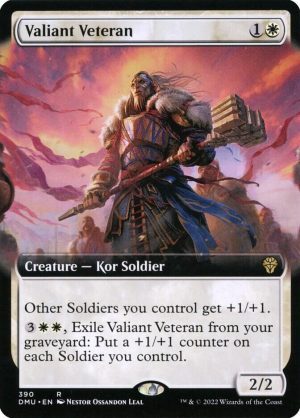
Conclusion
I hope you enjoyed this article, as I covered in detail the Grixis Midrange deck I won the Australasian Regional Championships with! Hopefully this can help you figure out how you want to build your Grixis decklist, and how to approach and sideboard against the top decks!
This Standard format is definitely the most enjoyable and complicated one I’ve ever played (possibly with the exception of the Caw Blade era), and I recommend everyone to give it a go – even if it’s just jamming a few games on Arena. For anyone who has a Regional Championships or any other significant Standard tournament coming up, I wish you well!
Till next time!
Zen Takahashi
@mtgzen on Twitter
About the Author
Zen Takahashi is a seasoned writer and mainstay on the Three for One Trading writing team. He is an avid Eternal player from Auckland, New Zealand and enjoys competing in local Legacy events and playing Old School over webcam with friends.
Previously, he was a Silver Pro for multiple years and his results included five Grand Prix Top 8s, a 27th place at Pro Tour Amonkhet, three consecutive online Regional PTQ wins, and he co-created the Modern Dredge deck.
Nowadays though, he primarily plays Legacy, his favorite format, but he also branches out into Pioneer and Modern.

More Articles by Zen Takahashi
AUS/NZ Regional Championship Report – Top 8
Zen qualified for the Pro Tour with Bant Toxic at the Australian/New Zealand Regional Championship! Now here’s all about his tournament experience, the preparation, the team and the many, many deck choices available.
Bant Toxic Guide
Learn all about Bant Toxic in Standard with Zen: The game plan, what hands to keep, how to sequence your turns, tips and tricks, and how to approach each of the major matchups.
Mono Red in Standard
The perfect preparation for our next Store Championship! Zen gives you all the information you need to win in Standard with Mono Red Aggro. As usual he gives you a small run down of the deck together with a lot of different sideboard guides against almost every meta deck of the format.
Rakdos Midrange in Pioneer [Update]
Mistakes have been made and lessons have been learned, so it’s time for an update on Zen’s Rakdos Midrange deck in Pioneer. This time with a very detailed matchup guide on the current Pioneer Meta with sideboard options for each popular deck you’ll encounter.
World Championships 2023 Report
Zen Takahashi is back with a full report of his time during the Magic: The Gathering World Championships 2023 in Las Vegas! Learn everything about his intense preparations, his great team, his tight schedule and tasty dinners.
Rakdos Reanimator Guide [2023]
Zen Takahashi played Rakdos Reanimator at the Magic: The Gathering World Championships in Las Vegas! In his latest article, he goes in-depth about how to play the deck, what to look out for in popular matchups and explains how to make best use of The Cruelty of Gix.
The Lord of the Rings Pro Tour Report
Zen Takahashi is back with another tournament report! This time it's all about Lord of the Rings in Barcelona. In this detailed article, he goes over his draft preparations and the overall fantastic weekend with his team and friends.
Modern Living End Primer
Zen Takahashi played Living End during the Lord of the Rings Pro Tour in Barcelona. Now he's ready to share some insights on this powerful Modern deck including the card choices, what hands to keep and how to sideboard against different opponents.
Regional Championship Report – Sydney
Zen Takahashi played Mono White Humans in Pioneer during the Regional Championships in Sydney! Find out all about what deck he played, what useful tips and tricks he had up his sleeves and how it all went down in his latest article! Bonus insider info on where to get the best truffle pasta in Sydney!
Pro Tour March of the Machine Tournament Report
Zen Takahashi writes about his experience during the Pro Tour in Minneapolis! Here you can read all about what deck he played, his preparation and a full report on the Pro Tour weekend with his team.
Rakdos in Standard
Our author Zen Takahashi competed at the Pro Tour in Minneapolis, shortly before re-qualifying for another Pro Tour. Both times he played Rakdos: Reanimator and Midrange! In his latest article, he compares both experiences and goes over each of the two decks in detail.
Standard Grixis Midrange Primer
Zen won the Australasian Championship with his Standard Grixis Midrange deck a few days ago. Lucky for us, he didn't take a break and wrote an in-depth primer for the deck including sideboard tips and card choices for us! Prepare yourself for future Regional Championships or Qualifiers, because you'll be either playing this deck or playing against it.
Australasian Regional Championships Report
Zen Takahashi won the Australasian Championship and qualified for the Pro Tour and the World Championship! Now we are getting an in-depth look into how he prepared for the tournament and how the games played out in an old-fashioned tournament report.
Boros Burn in Modern
Our author Zen Takahashi is feeling nostalgic, so it was time for a break from Pioneer and time for Modern Burn, Modern Boros Burn, to be precise! As usual Zen gives you a detailed overview of the deck, nice tips and tricks on how to maneuver it around the Modern meta decks and a useful sideboarding options, based on his experience.
Rakdos Midrange in Pioneer
Zen Takahashi is not done with Pioneer yet! For the Regional Championschip in Sydney, he and his team of over 10 other players tested different decks extensively until they came up with their own twist on the popular Rakdos Midrange deck.
Mono White Humans in Pioneer
Zen Takahashi takes a closer look at his newest favorite deck in Pioneer: Mono White Humans! As usual, you can expect in-depth tips and tricks as well as a sideboard guide from Zen, who was already very successful with his Pioneer decks in his Regional Championship Qualifiers.
Best Cards in Modern – Multicolor [2022]
We asked our seasoned team of authors a tough question: What do they think are the best ten multicolored cards in Magic the Gathering's Modern format. We then went a step further and created a Top 5. Learn what they think about the very best cards of one of the game's most popular formats.
Best Cards in Modern – Lands [2022]
We asked our seasoned team of authors a tough question: What do they think are the best ten lands in Magic the Gathering's Modern format. We then went a step further and created a Top 5. Learn what they think about the very best cards of one of the game's most popular formats.
Best Cards in Modern – Artifacts [2022]
We asked our seasoned team of authors a tough question: What do they think are the best ten artifacts in Magic the Gathering's Modern format. We then went a step further and created a Top 5. Learn what they think about the very best cards of one of the game's most popular formats.
Mono Red Primer for Pioneer
This time, Zen Takahashi writes in depth about his Regional Championship Qualifier Deck: Mono Red in Pioneer! That means we get a Primer for Mono Red Burn and Mono Red Frenzy. He also doesn't spare any details about key matchups in Pioneer and helps you to play your way around them!
Mono Blue Spirits in Pioneer
Zen Takahashi can't get enough of Pioneer, which means we have another great Pioneer Primer for you: Mono Blue Spirits! Read all about mulligans, sideboarding and most importantly: How to sequence your turns.
Best Cards in Modern – White [2022]
We asked our seasoned team of authors a tough question: What do they think are the best ten white cards in Magic the Gathering's Modern format. We then went a step further and created a Top 5. Learn what they think about the very best cards of one of the game's most popular formats.
How to Build Mono Red in Pioneer
After the success of his Blue-Red Ensoul article, Zen is back with another Pioneer primer: Mono Red! In his latest work, he excessively tested Devotion, Wizard and Burn decks. You can find all his discoveries and recommendations right here:
Legacy Reanimator 2022
If you are looking for a Reanimator Primer in Legacy, look no further! In his article, Zen Takahashi gives you everything you need to know about Reanimator: Which hands to keep? What are your opponents playing? How to sideboard? All these questions and more will be answered right here.
Blue-Red Ensoul in Pioneer
After a longer break, our author Zen Takahashi is excited to get back into Pioneer and crush the first PTQ season with his version of Izzet Ensoul. You can read all about the new and old decklist as well as mulligan strategies and other tips right here!
Best Cards in Modern – Green [2022]
We asked our seasoned team of authors a tough question: What do they think are the best ten green cards in Magic the Gathering's Modern format. We then went a step further and created a Top 5. Learn what they think about the very best cards of one of the game's most popular formats.
Auckland Eternal Weekend Report
Our author, Zen Takahashi, spent an Eternal Weekend in Auckland where he played tournaments of Vintage, Old School and Legacy. Real Power Nine, no proxies allowed! You can read all about what decks he played and how it went right here on our blog!
Best Cards in Modern – Red [2022]
We asked our seasoned team of authors a tough question: What do they think are the best ten red cards in Magic the Gathering's Modern format. We then went a step further and created a Top 5. Learn what they think about the very best cards of one of the game's most popular formats.
Top Ten Decks in Legacy 2022
In our latest article, Zen Takahashi analyses the best Legacy decks and comes up with his Top 10 Legacy decks of 2022. If you are curious to find out if your deck made the cut, or simply interested in what's going on in Legacy these days, keep on reading right here!
Best Cards in Modern – Black [2022]
We asked our seasoned team of authors a tough question: What do they think are the best ten black cards in Magic the Gathering's Modern format. We then went a step further and created a top 5. Learn what they think about the very best cards of one of the game's most popular formats.
Rainbow Dredge in Modern
Today’s article is all about Dredge in Magic: The Gathering, more specifically, Dredge in Modern. Zen Takahashi, one of the creators of Rainbow Dredge, took a look at the history of the deck and its current state in the meta. He’s also going over different iterations of the deck, as well as all the current sideboard options available.
Best Cards in Modern – Blue [2022]
We asked our seasoned team of authors a tough question: What do they think are the best ten blue cards in Magic the Gathering's Modern format. We then went a step further and created a top 5. Learn what they think about the very best cards of one of the game's most popular formats.
Blue Zenith in Legacy
Zen takes a look at a new deck that did surprisingly well in recent Legacy online events. Green Sun's Zenith and blue Counterspells are the engine in this midrange powerhouse.
Deck Spotlight Modern: Golgari Yawgmoth
Zen takes us to a wonderful world full of creatures, combos and one ofs in the Magic the Gathering Modern format. Chord of Calling is the name of the game. Let's go!
Deck Spotlight Legacy: UW Omni-Tell
Zen talks about one of his favorite decks for paper Legacy: Blue-White Show and Tell Omniscience combo. The best thing about it: It does not need a single card from the restriced list!
Bant Miracles in Post-Modern Horizons 2 Legacy
Zen Takahashi shares his thoughts about his favorite Legacy Deck – Bant Miracles in a Post-Modern Horizons 2 world. He explains which cards he added from the new set and how matchups have changed.

